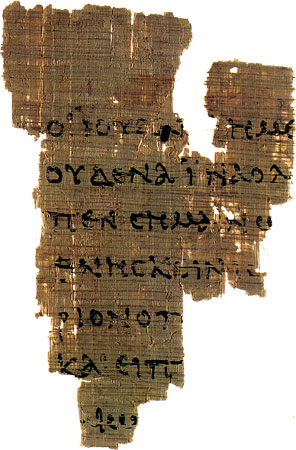
You may have caught the recent buzz about a new manuscript fragment from the gospel of Mark. The fragment was initially thought to be older than the manuscript fragment from the gospel of John, housed in the John Rylands library in Manchester, England (pictured with this post). This would have been historic. As it turns out, the Mark fragment isn’t that old. It does, however, appear to be the oldest fragment we have from the gospel of Mark. That is still very significant.
In fact, if you’d like to geek up on the story, check out this recent article published by Christianity Today.
The world of manuscript scholarship may sound too geeky and nerdy for youth ministry. And, well, it might be. But here’s the thing: the transmission of manuscripts is how we have our Bibles today. It was an inspired transmission process that has given us access to the living, breathing Word of God.
Further, it’s in that very transmission where skeptics feel they can find holes in the process, holes they feel unravels the Christian story. Those of us in youth ministry would do well to help our teens understand and trust the process for how we got the Bible that we hold in our hand or view on our phone.
Click here for a free excerpt from Unleashing God’s Word in Youth Ministry, an appendix item that gives a tree-top overview of the transmission process. It won’t turn you or your teens into manuscript scholars, but it will raise your level of understanding to help contribute to the dialogue when discoveries are made, such as the case with the fragment from the gospel of Mark.
A vlog of the blog: